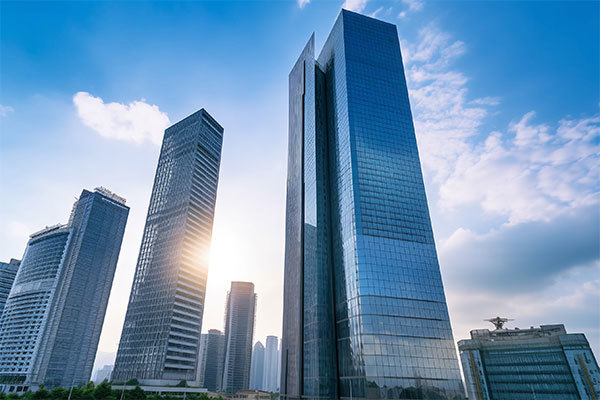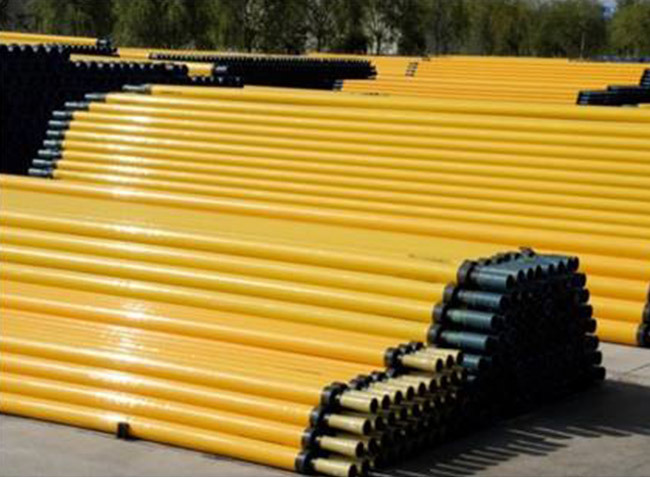





FRP corrosion-resistant equipment (container)
Classification: Products
Keywords: polyester glass steel pipe, polyester glass steel pipe
The main products are: polyester glass fiber reinforced plastic pipe, epoxy glass fiber reinforced plastic pipe, glass fiber reinforced plastic equipment container, tower, flue, glass fiber reinforced plastic pultrusion molding profile and carbon fiber series and other high-performance fiber composite materials.
FRP corrosion-resistant equipment (container)
Glass fiber reinforced plastic corrosion-resistant equipment can change the resin system and reinforcing materials to meet the special needs of users. The height can be from 1m to 16m. It is controlled and formed by a microcomputer. The corrosion-resistant and impermeable lining layer is first made on the steel core mold, then the structural layer is wound according to the designed line type and thickness, and finally the outer protective layer is made.
FRP and engineering plastic composite structure can also be used: glass fiber reinforced plastic/polyvinyl chloride (FRP/PVC), glass fiber reinforced plastic/polypropylene (FRP/PP), glass fiber reinforced plastic/polyvinyl fluoride (FRP/PVDF), etc.
1. basic features:
Excellent physical properties: the proportion of FRP is only 1/4~1/5 of that of steel, which is higher than that of steel, cast and plastic. The thermal expansion coefficient of FRP is roughly equivalent to that of steel, and the thermal conductivity coefficient is only 0.5 percent of that of steel.
Chemical corrosion resistance, long service life: FRP has special corrosion resistance. When storing corrosive media, FRP shows incomparable advantages over other materials, and can be resistant to a variety of acids, alkalis, salts and organic solvents.
The design flexibility is large, and the tank wall structure performance is excellent: the resin system and the reinforcing material can be changed to improve the physical and chemical properties of the glass fiber reinforced plastic to meet the needs of different media and working conditions. Through the structure layer thickness, winding angle and wall thickness structure and design to adjust the carrying capacity of the equipment, can withstand different pressure levels or meet some special performance, which is isotropic metal materials can not be compared.
2. product specifications:
Vertical: diameter DN600 ~ DN4000 mm (mm), volume 1~160 cubic meters (m³);
Horizontal type: diameter DN1000 ~ DN3600 mm (mm), volume 1~120 cubic meters (m³);
3. applications:
1. Acid resistance (hydrochloric acid, sulfuric acid, phosphoric acid, nitric acid, organic acid, fluosilicic acid, hydrofluoric acid, etc.);
2. Alkali resistance (sodium hydroxide, potassium hydroxide, sodium bicarbonate, ammonia, etc.);
3. Solvent resistance (benzene, chlorobenzene, methanol, toluene, methane, etc.);
4, salt water, sewage and other storage containers;
2. execution standard
JC/T587-2012 "glass fiber winding reinforced thermosetting resin corrosion resistant vertical tank Filament wound glass fiber reinforced thermoset resin corrosion resistant vertical tanks"
JC/T718-2012 "glass fiber winding reinforced thermosetting resin corrosion resistant horizontal tank Filament wound glass fiber reinforced thermoset resin corrosion resistant horizontal tanks"
HG/T20696-1999 Design Regulations for FRP Chemical Equipment
ASTM D4021 Standard Specification for Glass-Fiber Reinforced Polyester Underground Petroleum Storage Tanks Standard Specification Glass-Fiber-Reinforced Polyester Underground Petroleum Storage Tanks
Forging is a processing method that uses forging machinery to apply pressure to metal blanks to produce plastic deformation to obtain forgings with certain mechanical properties, certain shapes and sizes. Forging (forging and stamping) is one of the two major components. Forging can eliminate the defects such as loose casting in the smelting process and optimize the microstructure. At the same time, due to the preservation of the complete metal flow line, the mechanical properties of forgings are generally better than castings of the same material. Related machinery in high load, severe working conditions of important parts, in addition to the shape of a relatively simple available rolling plate, profile or welding parts, the use of forgings.
Previous Page
Next Page
Previous Page
Next Page
Related Downloads
Related Products
Online consultation

Pay attention to WeChat public number
Copyright©2023 Anhui xinhe new material co.,ltd | Business License | Powered By:300.cn | SEO









 025-57492608
025-57492608




